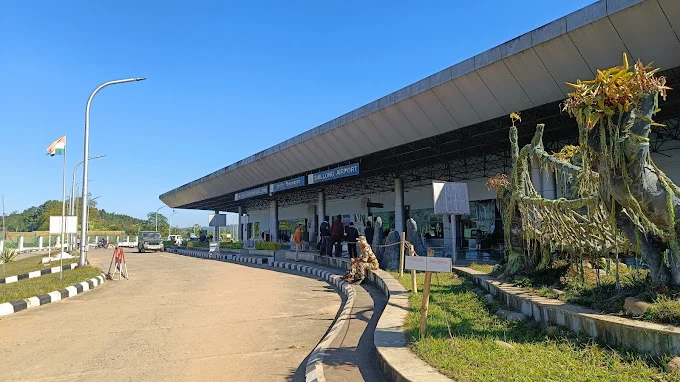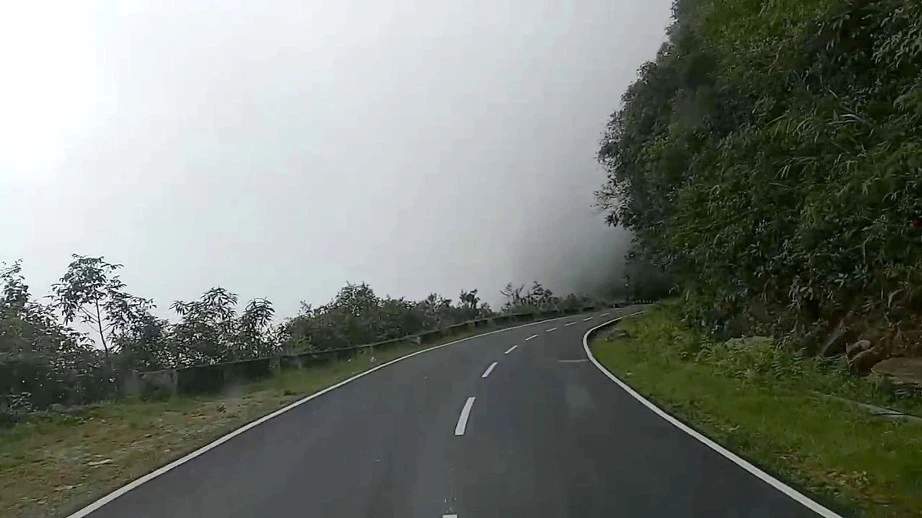How to Reach Dawki: Best Routes, Transport Options, and More
Dawki is a special place on the border between India and Bangladesh, in the state of Meghalaya. It is known for its beautiful scenery and the amazing Umngot River, where the water is so clear that boats look like they are flying! Many people want to visit Dawki because it’s becoming popular for fun trips and adventures. This makes some travellers curious about the best ways to get there easily. If you’re thinking about going on a fun road trip or taking a bus or train, it’s really important to know the best ways to get there. This article will help you how to reach Dawki, so your trip can be just as amazing as the beautiful sights you’ll see when you arrive. Get ready for an exciting adventure to Dawki!
Book here Dawki Tour Packages.
Transport Options to Dawki
1. By Air

Dawki is not directly accessible by air, but travellers can fly to either Shillong Airport or Lokpriya Gopinath Bordoloi International Airport in Guwahati. Shillong Airport (Umroi) is the nearest at about 100 km away, though it has limited flights primarily connecting with Kolkata. Alternatively, Guwahati Airport (about 200 km from Dawki) is a much better option due to its extensive connectivity with major Indian cities like Delhi, Mumbai, Kolkata, and Bangalore. After landing in Guwahati, travellers can easily book a private taxi or take a shared cab to Shillong and then onward to Dawki. The journey from Guwahati offers beautiful sights of lush landscapes and forested hills, which make the drive a memorable experience.
2. By Train

Guwahati Railway Station is the nearest railhead to Dawki, located roughly 170 km away. Guwahati station is a major railway hub in Northeast India, providing connections to various parts of the country, including metropolitan areas such as Delhi, Chennai, and Kolkata. After arriving in Guwahati, travellers can hire a taxi or take a bus to Shillong, which is the first leg of the journey toward Dawki. From Shillong, taxis and shared cabs regularly operate to Dawki, ensuring convenient onward travel. Travelling by train to Guwahati and then taking a road journey offers an economical option with the chance to see the Northeast’s scenic landscapes along the way.
3. By Road

For those who enjoy road trips, travelling to Dawki by road is a fantastic option. The Shillong to Dawki route spans about 82 km and can be covered in around 2-3 hours, making it a pleasant and popular drive. Private taxis are readily available in Shillong, and shared cabs or buses are also options for travellers looking for budget-friendly choices. The road journey offers a scenic drive with views of rolling hills, deep valleys, and waterfalls along the way, adding a sense of adventure to the trip. Renting a car from Guwahati or Shillong is another choice, ideal for those who prefer flexible stops to explore the beauty of Meghalaya’s countryside.
Local Transport in Dawki
Local transport in Dawki is fairly limited but caters well to travellers exploring this scenic border town and its surrounding attractions. Due to Dawki’s small size and natural attractions, transportation options here focus on simple and practical modes. Taxis and shared cabs are the primary means of local travel, offering convenient access to popular spots like the Umngot River, Mawlynnong village, and nearby viewpoints. For those who prefer flexibility, private taxi rentals are available in Shillong or nearby towns, allowing travellers to enjoy Dawki at their own pace. Additionally, auto-rickshaws can be found for short distances within the town. While public transportation is minimal, these available options provide a comfortable way to explore the pristine landscapes and clear waters of Dawki.
Conclusion
To get to Dawki, you need to travel by air, train, and car. Each way you travel is special and fun. The easiest way to start your trip is from Guwahati, which has lots of flights and trains coming from different parts of India. After that, you can enjoy a beautiful car ride through Shillong. Though you can fly from Shillong, it’s usually easier to go from Guwahati because there are more options. On your drive, you’ll see lovely green hills until you reach Dawki, where you can see the clear Umngot River. No matter if you fly, take a train, or drive, going to Dawki will be an exciting adventure with lots of chances to see the beautiful nature of Meghalaya!
Here you can also check our Dawki Tour Packages.
People also ask about How to reach Dawki
1. What is the nearest airport to Dawki?
The nearest airport to Dawki is Lokpriya Gopinath Bordoloi International Airport in Guwahati, Assam, which is approximately 180 km away. From there, you can hire a taxi or take a bus to Dawki.
2. How can I reach Dawki by train?
The nearest railway station to Dawki is in Umroi, which is about 40 km away. However, the more commonly used railway station is in Guwahati. From Guwahati, you can take a taxi or bus to Dawki.
3. What is the best way to reach Dawki from Shillong?
Dawki is around 81 km from Shillong. You can hire a taxi, take a shared cab, or use a bus service that operates between Shillong and Dawki. The journey typically takes about 2 to 3 hours.
4. Are there direct buses to Dawki?
There are limited direct buses to Dawki. Most travellers prefer to take a bus or taxi from Shillong to Dawki, as it provides more flexibility and comfort.
5. How long does it take to reach Dawki from Guwahati?
The journey from Guwahati to Dawki takes approximately 4 to 5 hours by road, depending on traffic and road conditions.
6. What are the road conditions like on the way to Dawki?
The roads to Dawki are generally in good condition, but some stretches may have rough patches. It’s advisable to drive carefully, especially during the monsoon season when landslides can occur.
7. Can I rent a car to drive to Dawki?
Yes, you can rent a car in Guwahati or Shillong to drive to Dawki. Ensure that you have the necessary permits and familiarize yourself with local driving regulations.
8. Is it safe to travel to Dawki?
Yes, Dawki is considered safe for tourists. However, it’s always good to take standard precautions, especially while travelling in remote areas.

